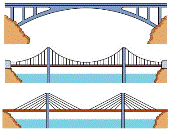Civil and Environmental Engineering, Department of

Department of Civil and Environmental Engineering: Faculty Publications
Document Type
Article
Date of this Version
2020
Citation
E3S Web of Conferences 205, 07012 (2020) https://doi.org/10.1051/e3sconf/202020507012
Abstract
Compressed air energy storage (CAES) technology has been re-emerging as one of the promising options to address the challenge coming from the intermittency of renewable energy resources. Unlike the large-scale CAES, which is limited by the geologic location, small- and micro-scale CAES that uses a human-made pressure vessel is adaptable for both grid-connected and standalone distributed units equipped with the energy generation capacity. The research team recently suggested a new concept of pipe- pile-based micro-scale CAES (PPMS-CAES) that uses pipe-pile foundations of a building as compressed air storage vessels. To ascertain the mechanical feasibility of the new concept, we conducted lab-scale pile loading tests with a model test pile in both a loose and dense soil chamber that emulates an actual closed- ended pipe pile. The test pile was subjected to a repeated cycle of compressed air charge (to Pmax=10 MPa) and discharge (to Pmin=0.1 MPa) during the experimental study. The displacement at the top of the test pile, with and without a structural loading, in loose and dense sand, was closely monitored during the repetitive air pressurization-and-depressurization. It was observed that the vertical displacement at the pile head under different conditions was accumulated during the extended cycle of air charge and discharge, but the rate of displacement gradually attenuates during the cycle. And, the presence of structural load and density of soil affected the magnitude of the accumulated vertical displacement. From the analysis, it can be concluded that the concept of PPMS-CAES is not likely to compromise the mechanical integrity of pipe piles while showing a promising capacity for energy storage.


Comments
The Authors, published by EDP Sciences.